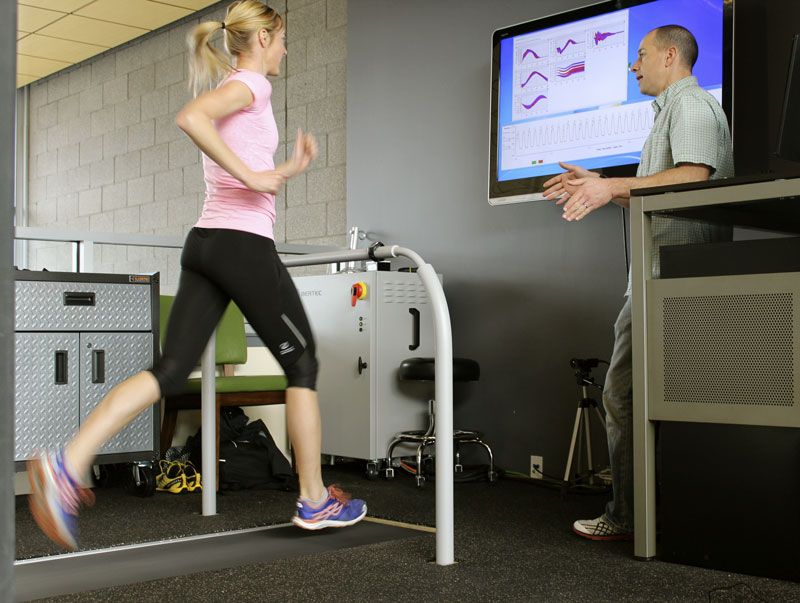
Well, its that time of year again. The sun sinks below the horizon early, and with that my phone rings with reporters wanting to know what tips they should give to their readers about running successfully on a treadmill. Rather than risking this info getting watered down, I figured I’d give you the straight scoop.
- Fact vs Fiction: A lot of coaches preach the message “you push yourself over the ground outside, and your pull yourself overground on a treadmill”…..this is 100% false. If you look at the fancy stuff we measure called “ground reactions forces” you’ll see very very similar patterns when running on either surface. The overall mechanics are very much the same.
- Think about it as a different surface, not a different way to run: despite the fact that treadmill running is very similar to running over ground, there are some differences, and some are actually what qualify as “statistically significant.” But if you look at the clinical impact this has, and if you deal with this type of data every day like I do, the differences are really small. There is a difference in body mechanics running on grass, trail, asphalt, and concrete. But again, these differences are small. As long as you slowly adapt your mileage to treadmill, you’ll be OK. No one runs 100% of their miles on trail and then jumps 100% onto the road. This goes for transitioning miles to the treadmill. Allow a few weeks to transition your mileage over, and your body will adapt to these slight changes.
- Run correctly on your treadmill: Here’s the most important one. Everyone has a friend who ran on their treadmill and then got hurt. Or maybe it was you. They “blame it on the treadmill” – what happened? First, you need time to acclimate (re-read previous paragraph). But most importantly, its not treadmill running that’s typically the issue. More often than not its running differently on the treadmill. Example. If running outside, you are free to make small fluctuations in speed. On the treadmill, the belt speed is held constant. So if you decide to try to slow down 1%, you can’t. As you get tired, your speed changes, but your cadence slows, which forces a longer stride than you are used to. Your body’s soft tissues are in a completely different position (longer) than you’ve trained them in your previous miles. This longer position can create strains on soft tissues and increase the lever arm on your joints and cause pain. But this really isn’t a treadmill issue – its a running form issue.
- To incline or not to incline? We often hear to increase the incline on the treadmill to 1-2% to make up for the lack of wind resistance. Here’s the deal. Raising the incline slightly increases the physiological stress level compared to flat, and it doesn’t really change the loads much on the body. In fact, running with a slight incline is actually a bit “safer” for the body since it makes it tougher to over-stride. So no harm here.
Read the rest of the article about treadmill running visit REP Lab’s website at: www.reporegon.com
